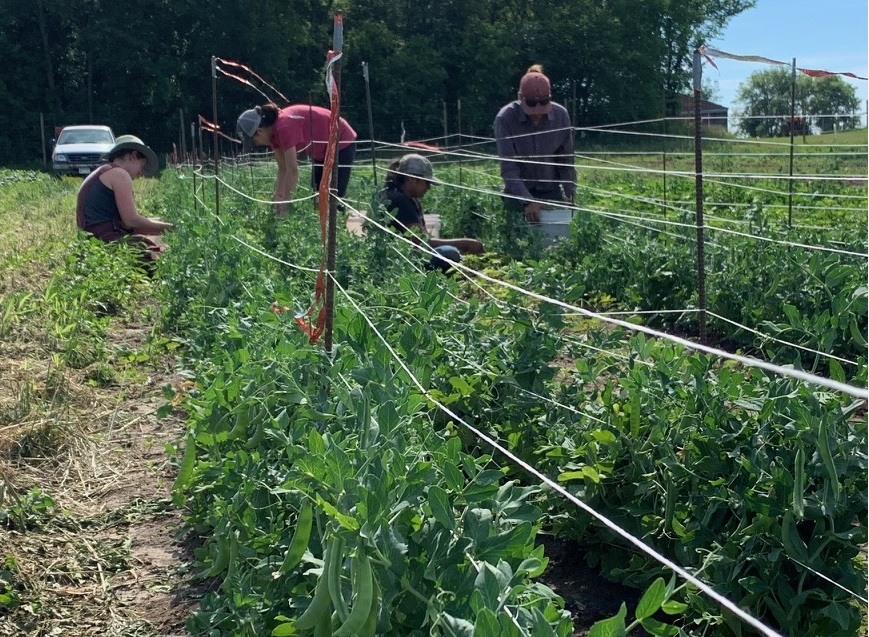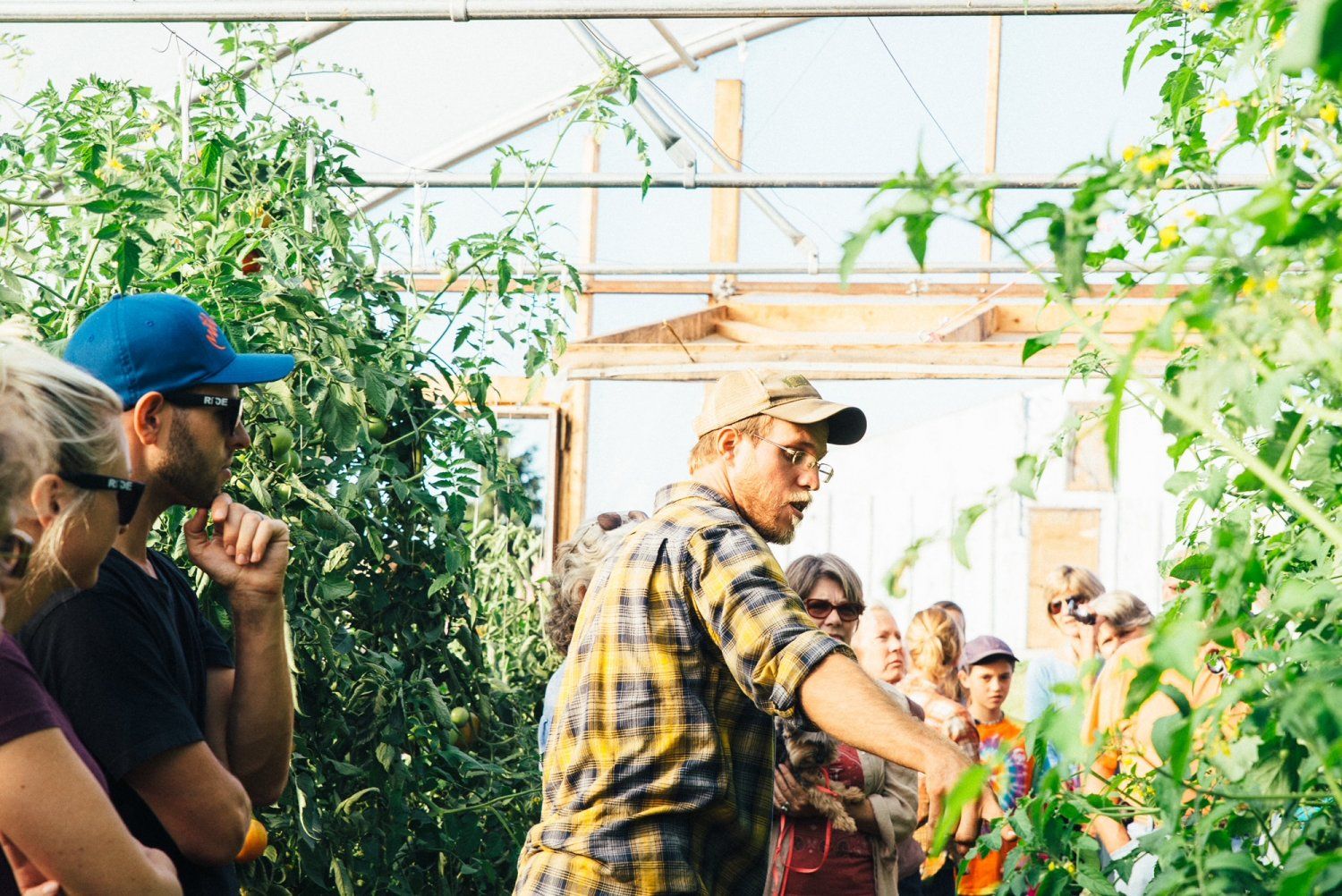We breathed a sigh of relief as we got hours of steady rain on Sunday - 2 inches in total - giving the crops and broader landscape a much needed soaking while dodging severe weather. The heat continues (although not triple digits like they've been receiving in the Pacific Northwest!) and the irrigation is running again on new plantings.
Another piece of farm news: we have continued our experiment with mulching, and this week was a long-awaited and anticipated trial of applying straw to an entire established field - not simply the pathways between plastic mulch-covered beds. Overall it seems successful, although in retrospect, we should have done it 2-3 weeks ago when the plants were smaller. There is some straw stuck in the branches of many pepper plants, but hopefully it will sift out in wind and rain over the next month before harvest begins in earnest. We now have about three acres of peppers growing with 100% covered soil. This may not mean much to the non-soil nerds in this audience, but it's a critical step forward for our sustainability as a farm. This means no erosion during heavy rainfall, less soil crusting, increased organic matter, stimulated microbes, and lots of other good things, like keeping fruits clean by preventing soil splashing.
.JPG)

For those of you interested in sustainably and humanely raised pork, we wanted to make a plug for our friend, Sarah Scheub. Here's a blurb she asked us to share:

Notes on some items in this week's share:
- Purplette onions: These early red onions generally range in size from a golf ball to a tennis ball. The earliest bulbing onion we know of, and you can use the stem and leaves like scallions.
- Fennel: Though not what I would consider a mainstream vegetable, this anise-flavored bulb has become a surprise favorite of ours. The bulb can be roasted in olive oil, thin sliced and eaten raw, or cooked with meats (especially chicken). We try to leave some of the fronds (leaves) which can also be eaten like an herb. We will have fennel available during the next two weeks, and then again once more in September.
- Green cabbage: Great for a summer slaw or pair with this week's beets and make some borscht - it's a superb cold summer soup.
- Cucumbers: Most of the cucumbers going out will have some some superficial damage from cucumber beetles, which are voracious this season. We don't love putting these in shares, but unfortunately it's all we have available for cucumbers. The the damage is really only skin deep, so you can peel it to remove the affected areas. The shelf life may not be as long, so try to eat sooner than later. Fingers crossed the tail end of the cucumber harvest will provide more unblemished fruits!
- Turnips: We have removed the tops and bagged these tasty little turnips, a favorite on our spring salads or fresh snacking. They're mild flavored and soft textured, great raw but also yummy sautéed or roasted.
- Zucchini: Expect one large zucchini or two smaller fruits. We have a couple more weeks of harvest before we're done for the season, so enjoy them while they're here.
- Sprouting broccoli: I was cautious about trying this broccoli type because I'm used to "crown" type broccolis that form one tight central head. Sprouting broccoli has small florets with long stems that are bunched together. It doesn't look quite as tidy as a head of broccoli but it's tender and sweeter than regular broccoli, especially during the warmer months when heading broccoli can get a bit bitter. Be sure to eat not just the florets but also the stems and any leaves, as well.
- Shelling peas: This is another first for me. Yes, they take a bit of time to shell, but with the proper technique it goes pretty quick. You may try eating these raw, but I've been preferring to sauté them in butter or add them to a stir-fry. Anneli has been enjoying them! Don't eat the pods on these, as they're fibrous.
- Bagged green and red butter lettuce: This was a densely sown planting of the varieties we typically grow as heads. Instead of thinning and letting them size up, we cut them like salad mix and will wash and bag them for you. These young leaves are more tender and less likely to be bitter than their fully mature counterparts. This will be the last of the head type lettuces for several weeks.
Have a great week!
Dana and the crew




